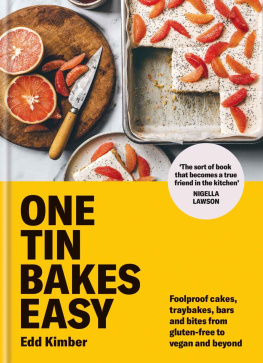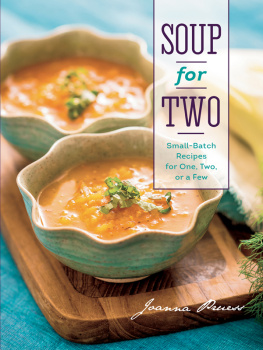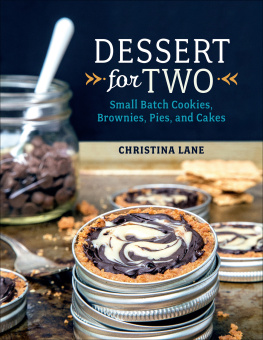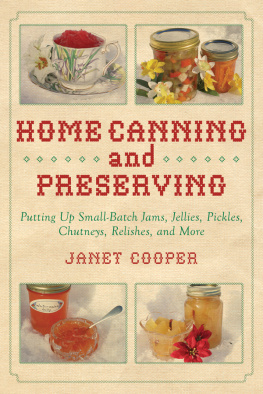Contents
Guide


CONTENTS

HOW TO USE THIS EBOOK
Select one of the chapters from the and you will be taken straight to that chapter.
Alternatively, jump to the to browse recipes by ingredient.
Look out for linked text (which is in blue) throughout the ebook that you can select to help you navigate between related sections.
You can double tap images and tables to increase their size. To return to the original view, just tap the cross in the top left-hand corner of the screen.
Introduction
The old adage that good things come in small packages should be the motto of this book. The recipes that appear in these pages are the definition of both good and small. Baking is so often thought of as something we do for large gatherings, for birthday parties, holidays and special occasions. This book is for the times and those people where smaller serving sizes are needed. That could be because you have ingredients left over, but not enough to use in other larger recipes; because you live alone but enjoy baking regularly and dont like waste; because youre a student and your budget doesnt stretch to the ingredients needed for big baking projects; because you want a dessert for date night; or maybe because you just like baking for you and the kids. Small batch baking is, for me, all about the joys of baking, but in amounts that mean I can bake more often and not have to worry about leftovers.
Within this book are recipes that make just one cookie, desserts for date night that serve two, recipes that make four servings when you might want a weeknight dessert, and a few recipes that serve small gatherings of six. Alongside the sweet stuff there is also a sprinkling of savoury think pizza dough, brioche burger buns, sausage hand pies and quiche.
It is also worth noting that many of these recipes can be frozen, so any leftovers can be kept for a later date. This means that even if youre baking just for yourself, every recipe is suitable for small households.
With small batch baking you will often come across the issue of recipes needing a single egg white or egg yolk, or only half a batch of pastry. To prevent waste and to help you find ideas for using up those leftovers, this book includes lists of recipes that make use of those . Everything in the Small Batch Basics chapter has a relatively long shelf life, and the resulting recipes freeze well, so ultimately nothing should go to waste.
COOKS NOTES
UK weights and terminology are followed by US equivalents in brackets.
All spoon measures are level.
All eggs are large (or extra large in the US) and preferably free-range.
All vegetables (including garlic) are medium-sized and should be peeled or trimmed.
All herbs and leaves should be washed and trimmed, as necessary.
Sea salt and freshly ground black pepper should be used wherever seasoning is required.
Ingredients
When it comes to small batch baking and the ingredients used, there isnt anything different from traditional baking, right? Actually, no there are a few differences to bear in mind. Much of what is bought specifically for baking is designed for certain portion sizes. Yeast, for example, most frequently comes in individual 7g packets, which are used for a loaf based on 500g (1lb 2oz) of flour not very helpful if youre using only teaspoon of yeast in a recipe. Lots of other ingredients come in cans that, once opened, need decanting into other containers. Because of this I have a few tips for the small batch baker
CANS
Instead of buying ingredients such as dulce de leche or condensed milk in cans, I buy them in bottles or glass jars, which are easier to reseal and store in the refrigerator for future use. Resealable packaging is generally preferable to cans, so look out for other items that use it.
YEAST
Trying to store partially used packets of yeast is downright annoying, so I recommend buying yeast that comes in small resealable containers (generally available in supermarkets alongside packet yeast) and measuring out the required amount yourself. Apart from being cheaper and using less packaging, its less wasteful.
FRUIT
Leftover fruit is another issue when baking in small batch style because the packaged amounts are sometimes more than required. Of course, you can simply eat the fruit as it stands, but there are other options. If I have leftover berries, for example, or maybe lemons that need using up, I will make a single jar of . If you dont have enough leftover fruit for a recipe, the best option is to freeze it, using a method called flash freezing.
















